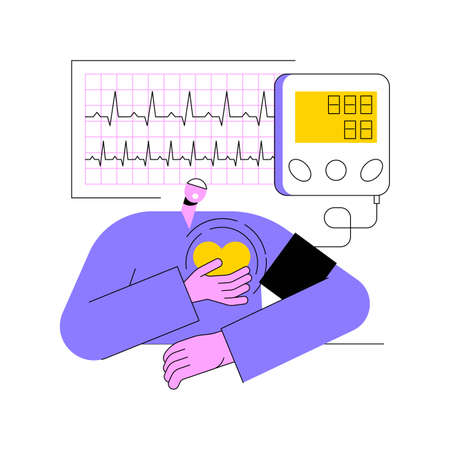Understanding Digital Overload
In today’s hyper-connected UK society, digital overload has become a prevalent feature of everyday life. With smartphones in every pocket, constant email notifications, and social media updates vying for our attention, Britons are more digitally engaged than ever before. According to Ofcom’s 2023 report, the average UK adult spends over six hours per day online, highlighting the sheer scale of digital saturation.
This relentless connectivity is not without consequences. Research from the Mental Health Foundation reveals that excessive screen time is linked to increased anxiety, sleep disturbances, and reduced productivity among both adults and young people across Britain. The blurring of boundaries between work and leisure—exacerbated by remote working trends—further amplifies feelings of overwhelm and fatigue.
While technology brings undeniable convenience, it also presents new challenges for our mental wellbeing. The pressure to be constantly available and responsive can undermine our ability to focus, unwind, and maintain healthy work-life balance. Recognising the signs of digital overload is the first step towards reclaiming control in an always-on world.
2. Signs and Symptoms of Digital Fatigue
As our lives become increasingly entwined with digital devices, recognising the signs of digital overload is essential for maintaining both mental and physical well-being. This is especially pertinent in the UK, where remote working, online learning, and constant connectivity have become the new norm for many professionals and students. Below is a breakdown of the most common indicators of digital fatigue frequently reported within these populations.
Key Indicators of Digital Overload
| Symptom | Description | UK Context |
|---|---|---|
| Disrupted Sleep Patterns | Difficulties falling or staying asleep, restless nights, or feeling unrested after sleep | Recent surveys by UK health authorities highlight increased sleep disturbances among office workers and university students who use screens late into the night |
| Lack of Focus | Trouble concentrating on tasks, reduced productivity, and frequent distractions | A study by the British Psychological Society found that over 60% of students reported diminished attention spans during online lectures compared to in-person classes |
| Increased Stress and Anxiety | Heightened feelings of pressure, irritability, and emotional exhaustion | The Mental Health Foundation has noted a rise in reported stress levels related to continuous digital engagement in both academic and workplace settings |
Additional Warning Signs to Watch For
- Physical symptoms such as eye strain, headaches, or neck pain—sometimes referred to as “tech neck” or “digital eye strain” by NHS guidance
- Reduced motivation or enthusiasm for previously enjoyable activities
- A sense of being constantly “switched on”, with difficulty disconnecting even outside work or study hours
Cultural Perspective: The UK’s Always-On Lifestyle
In the UK, the boundaries between work, study, and personal time are becoming increasingly blurred due to flexible working policies and high expectations for digital availability. This cultural shift makes it even more important for individuals to identify early warning signs of digital fatigue. Awareness is the first step towards adopting healthier habits—such as mindful breathing techniques—to restore balance in our digitally connected lives.

3. The Science Behind Mindful Breathing
Amidst the constant barrage of notifications and digital demands, mindful breathing has emerged as a powerful, evidence-based tool to restore equilibrium. According to NHS guidelines, mindfulness practices such as focused breathing can significantly reduce feelings of stress and anxiety that are commonly exacerbated by digital overload. When we spend prolonged periods scrolling through social media or responding to emails, our sympathetic nervous system—the bodys fight or flight response—can become overactivated, leading to increased heart rate, shallow breathing, and heightened stress hormones.
Mindful breathing works by stimulating the parasympathetic nervous system, which counteracts these effects and induces a state of calm. UK-based research from institutions like University College London has shown that even brief periods of controlled breathing can lower cortisol levels, improve focus, and enhance emotional regulation. The NHS recommends simple techniques such as box breathing or diaphragmatic breathing to anchor attention in the present moment and reduce mental fatigue.
Unlike quick fixes or digital detoxes that may feel impractical in daily British life, mindful breathing is accessible anywhere—from the bustle of the London Underground to a quiet corner at work. By regularly practising these techniques, individuals can build resilience against digital overwhelm and foster a sense of clarity and balance amidst the noise of our connected world.
4. Practical Breathing Techniques for Everyday Life
In a fast-paced, digitally connected Britain, finding moments to pause and reset is crucial for our wellbeing. Mindful breathing can be seamlessly integrated into daily routines, whether you’re commuting on the Tube, working in an open-plan office, or studying at university. Below are simple, evidence-backed breathing exercises tailored to fit the British lifestyle:
Box Breathing (Square Breathing)
This technique is popular among professionals and students alike due to its simplicity and effectiveness. It’s ideal during stressful meetings or before exams.
| Step | Instructions | Time Needed |
|---|---|---|
| 1 | Inhale deeply through your nose for a count of 4 | 4 seconds |
| 2 | Hold your breath for 4 counts | 4 seconds |
| 3 | Exhale slowly for 4 counts | 4 seconds |
| 4 | Pause and hold for 4 counts before repeating | 4 seconds |
The 7/11 Technique (Lengthened Exhale)
This method, recommended by UK mental health charities, helps calm the nervous system—perfect after receiving a barrage of notifications or emails.
- Breathe in gently through your nose for a count of 7.
- Breathe out slowly through your mouth for a count of 11.
- Repeat this cycle for 3-5 rounds, focusing on elongating the exhale.
The Tea Break Reset
The classic British tea break offers an ideal moment to incorporate mindful breathing. Before sipping your brew:
- Sit comfortably and close your eyes if you feel safe to do so.
- Breathe in deeply as you notice the aroma of your tea.
- Breathe out slowly, letting go of tension in your shoulders and jaw.
- Repeat 3-5 times before continuing with your day.
Tactical Tips for Incorporation at Work, Uni, and Home
| Setting | When to Practise | Suggested Technique |
|---|---|---|
| Workplace (Office/Home) | Before meetings or after phone calls | Box Breathing or 7/11 Technique |
| University/Library | During study breaks or exam prep sessions | The Tea Break Reset or Box Breathing |
| At Home (Evenings) | Before bed or when unwinding after screen time | 7/11 Technique or gentle abdominal breathing |
A Data-Driven Approach to Habit Formation
NHS guidelines suggest that even two minutes of mindful breathing daily can reduce stress markers and improve focus. By pairing these techniques with everyday British rituals—like tea breaks—you can build sustainable habits that counteract digital overload without disrupting your routine.
5. Building Mindful Habits in a Connected Society
As digital devices become ever-present in our lives, especially in the UK where 94% of adults own a smartphone, it is crucial to establish mindful routines that counterbalance the pressures of constant connectivity. Developing these habits can significantly improve mental wellbeing and support healthier tech use.
Set Intentional Digital Boundaries
Begin by designating device-free periods during your day. For instance, consider a “digital sundown” after 8pm or a screen-free breakfast. Use settings such as Do Not Disturb or Focus Mode to reduce unnecessary notifications, especially during personal time or family meals.
Schedule Regular Mindful Breaks
Integrate short, mindful breathing sessions into your schedule. Even three minutes of slow, conscious breathing between meetings or while commuting on the Tube can help reset your mind and lower stress levels. Set reminders using your phone’s alarm or calendar apps to prompt these breaks.
Engage with Your Local Environment
Whenever possible, step outside for fresh air—a staple recommendation by NHS wellbeing guidelines. Whether it’s a walk through a city park or simply opening a window for a few deep breaths, engaging with your immediate environment fosters presence and reduces digital fatigue.
Community and Workplace Support
Encourage workplaces and schools to create collective moments of pause—such as group breathing exercises before meetings or study sessions. Many UK employers now offer mindfulness workshops; take advantage of these resources if available.
Reflect and Adjust Regularly
Once a week, reflect on your digital habits. Are you spending more time online than intended? Are mindful breaks helping your mood or focus? Use tools like weekly screen-time reports to inform small adjustments, creating sustainable routines that support long-term wellbeing in our connected society.
6. Resources and Support
Achieving sustained digital balance and managing digital overload can be a complex journey, but utilising trusted resources and support systems can make a significant difference. Below are some reputable UK-based organisations, helplines, and mindfulness apps that offer guidance, practical tools, and community support for fostering personal growth and resilience in our hyper-connected society.
UK-Based Digital Wellbeing Resources
- Mental Health Foundation: This charity provides research-driven advice on mental wellbeing in the digital age, including guides on healthy technology habits. mentalhealth.org.uk
- Mind: Offering resources specifically focused on digital stress, anxiety, and how to set healthy boundaries online. mind.org.uk
- The Digital Wellbeing Initiative (YoungMinds): Practical tips for young people and parents navigating digital life. youngminds.org.uk
Helplines for Immediate Support
- Samaritans: Available 24/7 for anyone struggling to cope, including those feeling overwhelmed by digital pressures. Call 116 123 or visit samaritans.org
- Shout 85258: A free, confidential text messaging service for anyone experiencing mental health challenges—text “SHOUT” to 85258. giveusashout.org
Mindfulness Apps with UK Focus
- Headspace: Offers guided mindful breathing exercises and meditations tailored for busy lifestyles; includes content developed with NHS partnerships.
- Calm: Features British-accented guides and sleep stories, plus breathing techniques designed to help reduce digital stress.
- Smiling Mind: A non-profit app with structured mindfulness programmes suitable for both adults and young people.
Further Reading and Community Support
- Check your local NHS website or GP surgery for mental health services and digital detox workshops available in your area.
- The Royal Society for Public Health (RSPH) publishes reports on social media’s impact on wellbeing—worth exploring for data-driven insights.
Takeaway
No one needs to navigate the challenges of digital overload alone. By connecting with credible resources, reaching out for support when needed, and integrating mindfulness tools into daily routines, it is possible to reclaim control over your relationship with technology—fostering both personal growth and a sustainable sense of balance in the connected world.


